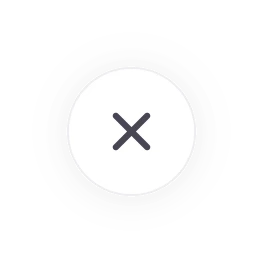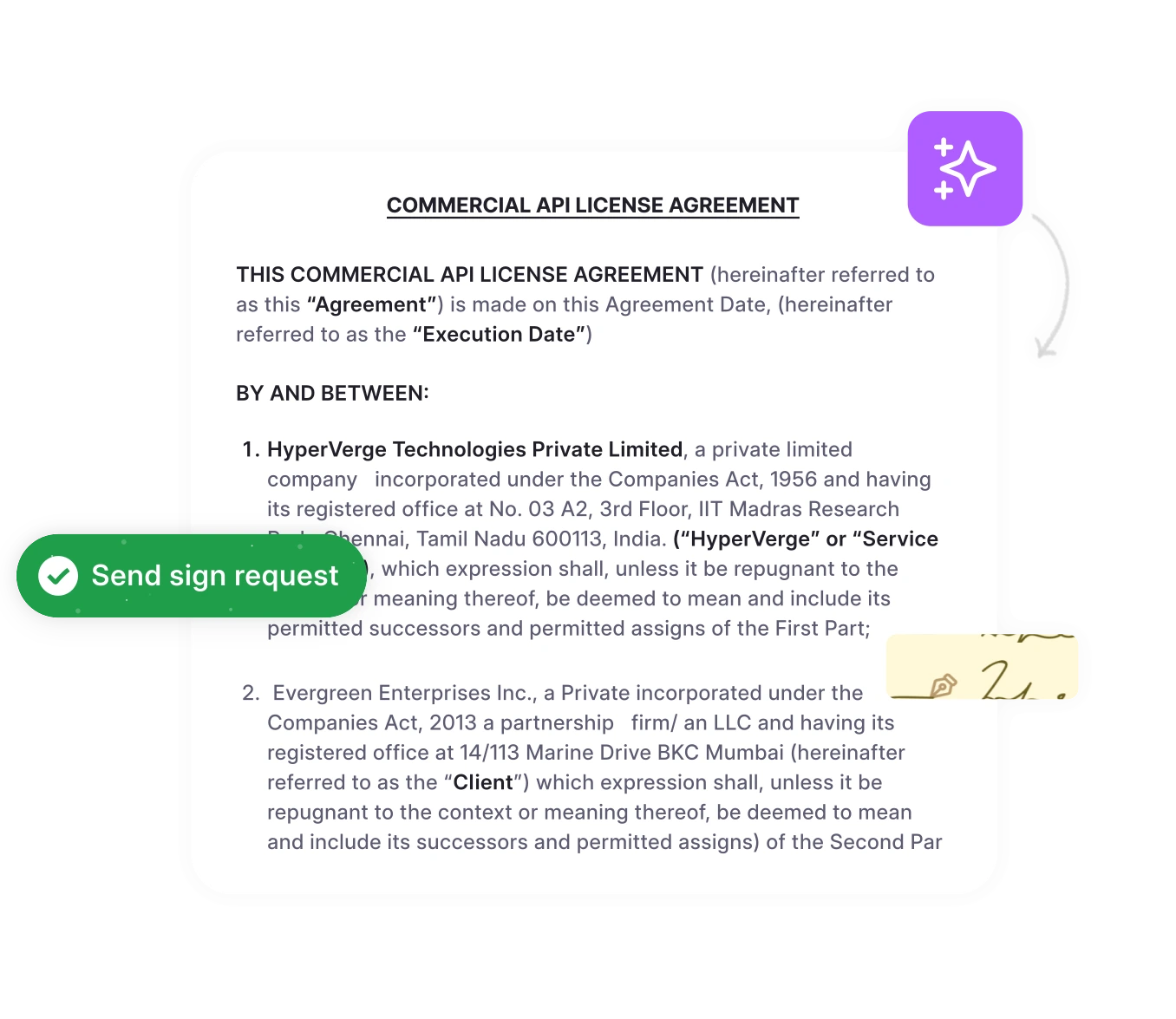Finalizing a supplier contract might mark the finish line of a deal, but it’s just the starting point for execution, oversight, and performance tracking.
Still, many organizations treat contracts as static documents leading to missed deadlines, poor supplier outcomes, and costly mistakes. According to the 2024 ProcureCon CPO Report, only 46% of respondents said their CPOs have taken on a bigger strategic role, while 43% reported no change highlighting a gap between contract management and business priorities.
Supplier contract management is what turns agreements into actual results by ensuring accountability, tracking performance, and unlocking long-term value.
In this guide, we’ll walk you through the entire supplier contract lifecycle from drafting to renewal so you can build stronger partnerships.
Let’s get started.
What is supplier contract management?
Supplier contract management is the process of creating, executing, and tracking business contracts between your company and external suppliers. It ensures both parties meet the terms of their agreements from pricing and delivery to service quality and payments.
While signing marks a major milestone, the real value begins post-signature: tracking supplier performance, enforcing terms, managing scope changes, and planning renewals.
A structured supplier contract management process helps you:
Minimize operational and financial risk
Improve vendor accountability
Ensure continuity and compliance across the supply chain
Understanding the core responsibilities helps clarify what goes into managing supplier contracts effectively.
Let’s break down the key activities.
Key activities in supplier contract management
A structured contract management process ensures that supplier agreements are signed, successfully executed, monitored, and renewed with minimal risk and maximum value. Here are the five essential activities involved:
- Drafting: Contracts are created with input from legal, procurement, and operational teams. This stage outlines contract terms, deliverables, pricing, delivery timelines, penalties, and service levels. Using standardized contract templates and pre-approved clause libraries ensures consistency and reduces legal risks.
- Negotiating: Both parties align on expectations, scope, timelines, and risk-sharing. Vendor contract negotiation may involve back-and-forth redlining of clauses and concessions before arriving at mutually acceptable terms.
- Monitoring: Once a contract is active, supplier performance must be tracked against key performance indicators (KPIs), SLAs, and delivery schedules. Poor monitoring of metrics can lead to compliance issues, missed deadlines, and unmet performance obligations.
- Amending: Contracts aren’t static. Changes in business priorities, regulations, or scope require contract review and proper amendments. Every change must be documented with version control and clear audit trails to maintain contract compliance.
- Renewing: Toward the end of a contract term, businesses must assess whether to renew, renegotiate, or terminate. Failure to do so proactively can result in unwanted auto-renewals or service disruptions.
Treating all third parties the same leads to missed risks and opportunities. In the next section, we’ll explore how vendor management differs from supplier contract management and why the distinction matters.
Redlines buries everywhere?
Track deviations with AI suggestions, centralize all changes with comprehensive audit trails, version tracking, and Word integration— get context in seconds.
Book a DemoHow is supplier contract management different from vendor contract management?
Although “supplier” and “vendor” are often used interchangeably, supplier and vendor contract management serve slightly different purposes within a business’s procurement strategy.
Here’s a clear breakdown of the difference:
| Aspect | Supplier Contract Management | Vendor Contract Management |
| Focus | Long-term strategic relationships focused on raw materials, components, or essential services. | Often short-term or transactional relationships for finished goods or one-off purchases. |
| Contract Complexity | Involves more detailed contracts with service-level agreements (SLAs), KPIs, and ongoing performance reviews. | Contracts may be simpler, with fewer clauses around performance or delivery tracking. |
| Impact on Business | Directly affects production timelines, quality control, and supply chain efficiency. | Influences day-to-day operations or support functions, but not always mission-critical. |
| Risk Management | Higher risk exposure due to delivery dependencies and long-term obligations—requires robust monitoring. | Lower risk profile in most cases, with fewer interdependencies. |
| Management Approach | Requires continuous oversight, performance monitoring, amendments, and collaboration across departments. | Often handled by procurement teams with less frequent involvement from legal or operations. |
Suppliers help you build your product. Vendors help you run your business.
Since suppliers are deeply embedded in your daily operations and long-term strategy, managing their contracts requires more structure, accountability, and visibility. This includes overseeing contract-related documents, tracking performance metrics, and preparing for contract renewals with strategic foresight.
While both are critical, supplier contract management demands more ongoing attention to ensure cost efficiency, compliance, and a resilient business relationship.
What are the key stages in the supplier contract lifecycle?
A fragmented supplier contract management process often leads to compliance issues, missed obligations, and supplier disputes. Understanding each stage of the supplier contract lifecycle gives procurement and legal teams a clear, consistent approach to manage supplier agreements from onboarding to renewal.
1. Contract request
Before any agreement is signed, evaluating potential suppliers based on their capabilities, financial health, risk profile, and compliance with regulatory and internal standards is critical. This step sets the foundation for successful contracting. Key activities include:
Supplier due diligence
Risk and compliance assessments
Alignment with business and procurement goals
2. Contract drafting and negotiation
Once the supplier is shortlisted, contract creation begins. Key elements include:
Outlining deliverables and timelines
Setting service level agreements (SLAs) and performance metrics
Establishing payment terms, penalties, and exit clauses
Negotiation may involve multiple rounds of edits and stakeholder input. Standardized templates and clause libraries can make this process faster and less error-prone.
3. Approval and execution
Once terms are agreed upon, contracts must go through internal review and contract approval workflows. Final documents are executed using secure eSignature tools to ensure speed and accountability.
Internal stakeholder approvals
Revision tracking and finalization
Digital contract execution
“Review the contract results along with the supplier on regular basis gives the buyer an opportunity to give feedback on performance. Regular reviews give the buyer also the opportunity to hear from supplier updates on the market, potential issues/risks in the supply chain, technological advances, reduce the risk of contract and performance disputes.“
4. Performance monitoring
After execution, the focus shifts to tracking supplier performance against the contract’s terms. This helps ensure accountability and identifies issues early.
Monitoring KPIs (e.g., delivery timelines, quality metrics, SLA adherence)
Regular supplier reviews and audits
Issue escalation and resolution
5. Amendments and change management
Business needs often change. Contract changes must be managed carefully to maintain legal clarity, whether it’s scope expansion, revised timelines, or pricing adjustments.
Documenting and approving changes
Version control and audit tracking
Communicating updates to stakeholders
Great supplier contracts include formal mechanisms for managing change.
1) Contractual obligations and roles for managing a successful transition
2) Managing the detailed changes to the contract
3) How the parties will manage their continuous improvement projects and more strategic innovation pipeline initiatives.
6. Renewals and termination
As contracts near expiration, you’ll need to evaluate performance and decide whether to renew, renegotiate, or end the relationship. Automated reminders help avoid unwanted auto-renewals or last-minute decisions. If termination is the best path, ensure it’s done in compliance with contractual obligations and without disrupting business operations.
By structuring supplier contract management around these stages, businesses can streamline operations, improve contract compliance, and build stronger, more transparent supplier relationships.
Stop silent auto-renewals
Get alerts on critical deadlines and obligations. Analyze contract performance and recapture missed opportunities.
Book a DemoEven with a clear process in place, challenges are inevitable. Here’s what to watch out for and how to handle it.
What are the common challenges in supplier contract management, and how can you solve them?
Even with a solid contract management process, issues often emerge late after deadlines are missed, disputes arise, or audits fail. Below are the most common supplier contract management challenges and how to solve them with the right strategy and tools.
| Challenges | Solution |
| Poor contract visibility | Store all contracts in a centralized digital repository Tag documents by supplier, renewal date, and contract type Enable role-based access for security and collaboration |
| Missed renewal or expiration deadlines | Set automated alerts for 90/60/30-day reviews Create a contract renewal dashboard sorted by priority or value Sync alerts with Slack, Teams, or email for real-time follow-up |
| Contract compliance gaps | Use pre-approved templates and clause libraries aligned with internal policies Enable mandatory legal reviews for high-risk agreements Keep audit logs and version history inside your CLM |
| Slow negotiation cycles | Use CLM workflows to handle contract routing, stakeholder approvals, and conditional escalations Empower procurement teams with fallback terms and pre-approved positions Track edits and comments in a single version-controlled environment |
| Fragmented communication | Use shared CLM platforms with real-time collaboration features Assign clear roles, such as the contract manager who oversees execution, legal reviewers, and business approvers. Keep a single source of truth accessible to all stakeholders |
Tackling these challenges is easier when you have a clear plan. Consider the following best practices as a practical checklist moving forward.
What are the best practices for managing supplier contracts effectively?
Instead of theory, here’s a practical list you can apply today to bring structure, accountability, and speed to your contract process. Use this checklist to streamline your workflows, improve contract compliance, and maximize ROI from your business contracts.
- Standardize Templates & ClausesUse pre-approved templates for common contract typesMaintain a clause library for SLAs, indemnities, NDAs, etc.Define fallback terms to reduce legal back-and-forth
- Centralize Contracts in One PlaceStore all contracts in a cloud-based, searchable repositoryTag documents with supplier name, contract type, and renewal dateSet role-based access for secure collaboration
- Define & Track Supplier KPIsSet measurable KPIs like on-time delivery, SLA adherence, defect ratesUse scorecards or dashboards for trackingSchedule regular performance reviews
- Automate Key RemindersSet alerts for renewals, expirations, and compliance updatesUse 90/60/30-day lead times for planningIntegrate with email, Slack, or Teams for alerts
- Involve Cross-Functional Teams EarlyInclude legal, procurement, finance, and operations in draftingUse tools with real-time commenting and version controlAssign clear roles for drafts, reviews, and approvals
- Run Regular Supplier AuditsReview high-value contracts quarterly or biannuallyCompare actual performance against agreed termsDocument issues and take corrective action
- Maintain Audit Trails & Version HistoryTrack every contract change and commentArchive terminated contracts with full revision logsUse CLM tools for clean, reliable audit trails
When these best practices become part of your operating rhythm, you gain not just process efficiency but also better supplier outcomes, fewer risks, and measurable cost savings.
Let’s compare supplier contract management before and after using CLM software.
Your renewal reminder shouldn’t come from your vendor.
Waiting for a supplier to tell you your contract is expired? HyperStart alerts you way before that awkward phone call.
Book a DemoBefore CLM vs After CLM: How supplier contract management transforms
To see the difference CLM software can make, here’s a side-by-side look at how supplier contract management works before and after implementing a platform.
| Phase | Before CLM | After CLM |
| Performance Tracking | Hard to monitor SLAs, delivery timelines, or dispute resolution without digging through emails | Dashboards show real-time KPIs, performance metrics, and risk alerts at a glance |
| Renewal Management | Missed deadlines, auto-renewals, and last-minute decisions due to no alerts | Automated 90/60/30-day reminders for renewals, reviews, and terminations |
| Contract Drafting | Time-consuming, error-prone manual drafting from scratch | Use of pre-approved templates and clause libraries for faster, consistent contract creation |
| Collaboration | Fragmented communication via email, Excel, and disconnected documents | Real-time collaboration, comments, version control, and role-based workflows in one place |
| Risk Management | Risky clauses or outdated terms often go unnoticed | AI flags non-compliant language and highlights missing terms automatically |
| Audit Readiness | No centralized log of who changed what, difficult to track version history | Full audit trails and version history with timestamps for every action |
| Execution Speed | Paper-based or scattered eSignature tools delay finalization | Built-in eSignatures for instant contract execution |
| Team Visibility | No shared view across procurement, legal, and operations | Single source of truth for all teams with secure access and supplier-specific filters |
| Tool Integration | Data locked in silos—requires manual re-entry into ERP or sourcing tools | Integrated contract management software connects with productivity and sourcing platforms |
HyperStart brings all of these capabilities into one seamless platform designed specifically for supplier contracts.
Why should you use HyperStart for supplier contract management?
You need a system that works across teams and grows with your business. This section shows how HyperStart delivers that.
1. End-to-end contract lifecycle management
HyperStart is a supplier contract management software that supports every phase of supplier contracting from drafting to renewal with smart automation, centralized storage, and structured workflows. No more toggling between tools or losing track of critical documents.
Draft faster with built-in templates
Route contracts automatically for review and approval
Monitor obligations and performance in real time
2. Intelligent reminders and renewal alerts
It’s easy to lose track of renewal dates or SLA reviews—until it costs you. HyperStart helps you stay ahead by sending timely alerts so nothing slips through the cracks.
Get notified well in advance of contract expirations or renegotiations
Schedule performance check-ins with suppliers
Keep tabs on compliance deadlines, insurance updates, and more
3. Pre-approved templates for faster supplier onboarding
Starting work with a new supplier shouldn’t take weeks. HyperStart gives procurement teams ready-to-use contract templates, so you’re not waiting on legal to draft every agreement from scratch.
Speed up onboarding with role-specific contract templates
Reduce back-and-forth and standardize terms from the start
4. Audit-ready compliance management
Whether it’s an internal check or a formal audit, you’ll never have to scramble to prove who changed what or when. HyperStart automatically logs every contract version, comment, and approval, so you always have a complete history.
Keep a clear, searchable audit trail
Flag risky clauses early with built-in compliance checks
Show exactly how contracts have evolved over time
Whether you’re managing 200 or 2,000 supplier agreements, HyperStart gives your team the speed, control, and visibility needed to reduce risk and unlock measurable cost savings. To know more you can schedule a product walkthrough.








